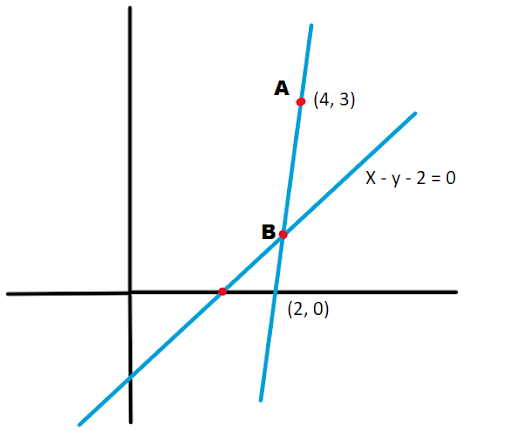A line with a slope greater than 1 passes through point A(4, 3) and intersects the line x – y – 2 = 0 at point B. If the length of the line segment AB is , then B also lies on the line
- 2x + y = 9
- 3x – 2y = 7
- x + 2y = 6
- 2x – 3y = 3
Solution:
Firstly make the graph according to the question.
Use the formula to find the length of the line segment.
Then identify which line satisfy point B.
Step 1 of 3:
According to the question, we get
Step 2 of 3:
We have A(4, 3)
Let B(a, b) = B(a, a-2)
Also, given that length of line segment AB =
But we know that,
If then length
On squaring both sides
Now, On the factorisation of the quadratic equation, we get
or
When
When
or
Step 3 of 3:
Line x + 2y = 6 is satisfy by
Final Answer:
Hence, Option (C) is correct

Leave a Reply